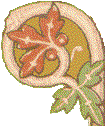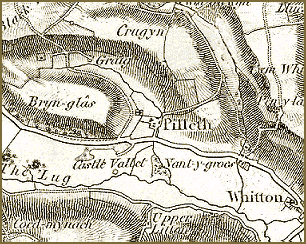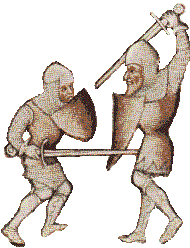
The revolt of Owain Glyndwr
Pilleth: the battle of Bryn Glas, 1402
 In
June 1402 Owain Glyn Dwr led a force into Radnorshire. He was
intercepted by "almost all the militia of Herefordshire"
under the command of Edmund Mortimer, which would have been largely
made up of tenants from the Mortimer estates. The two armies
met near the village of Pilleth, a few miles from Presteigne.
The chronicles imply that the battle took place on the hill above
Pilleth church, Bryn Glas ("Green Hill"). As with all
accounts of battles in the middle ages it is impossible to be
sure of the numbers involved, but Mortimer’s army could
not have consisted of more than 4,000 men.
In
June 1402 Owain Glyn Dwr led a force into Radnorshire. He was
intercepted by "almost all the militia of Herefordshire"
under the command of Edmund Mortimer, which would have been largely
made up of tenants from the Mortimer estates. The two armies
met near the village of Pilleth, a few miles from Presteigne.
The chronicles imply that the battle took place on the hill above
Pilleth church, Bryn Glas ("Green Hill"). As with all
accounts of battles in the middle ages it is impossible to be
sure of the numbers involved, but Mortimer’s army could
not have consisted of more than 4,000 men.This section from an early 19th century Ornance Survey map shows the topography of the Lugg Vale and Bryn Glas vey well
Powys County Archives Office

 It seems probable that Owain’s
forces took up a position on the hillside, and that Mortimer’s
army advanced up the hill to meet them. At the crucial moment,
however, their own archers turned on them and they were utterly
defeated. The slaughter was said to be horrendous, and accounts
put the numbers killed at between 200 and 1,100. This was one
of the most significant moments of the rebellion: an English
county levy had been utterly overwhelmed by the Welsh. Reports
also quickly circulated that the Welsh women accompanying Owain’s
army had "obscenely mutilated" many of the bodies of
the fallen.
It seems probable that Owain’s
forces took up a position on the hillside, and that Mortimer’s
army advanced up the hill to meet them. At the crucial moment,
however, their own archers turned on them and they were utterly
defeated. The slaughter was said to be horrendous, and accounts
put the numbers killed at between 200 and 1,100. This was one
of the most significant moments of the rebellion: an English
county levy had been utterly overwhelmed by the Welsh. Reports
also quickly circulated that the Welsh women accompanying Owain’s
army had "obscenely mutilated" many of the bodies of
the fallen. Local tradition indicates that the bodies
were buried in mass graves on the hillside and six Wellingtonia
trees were planted to indicate one of the sites; although no
records exist to substantiate this claim, it is quite possibly
true. (This photograph shows the parish church of Pilleth
and the Wellingtonia trees marking the grave site on the slope
of Bryn Glas).
Local tradition indicates that the bodies
were buried in mass graves on the hillside and six Wellingtonia
trees were planted to indicate one of the sites; although no
records exist to substantiate this claim, it is quite possibly
true. (This photograph shows the parish church of Pilleth
and the Wellingtonia trees marking the grave site on the slope
of Bryn Glas).